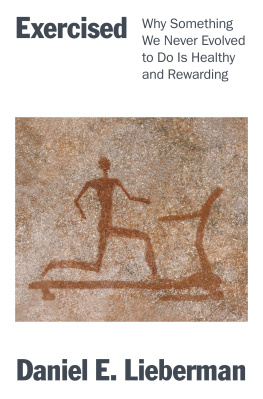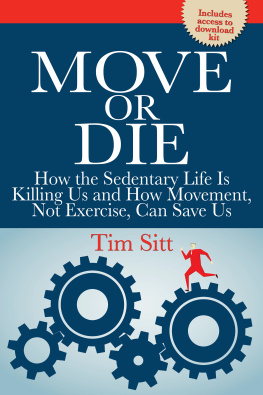Contents
List of Figures
List of Tables


World Headquarters
Jones & Bartlett Learning
25 Mall Road
Burlington, MA 01803
978-443-5000
www.jblearning.com
Jones & Bartlett Learning books and products are available through most bookstores and online booksellers. To contact Jones & Bartlett Learning directly, call 800-832-0034, fax 978-443-8000, or visit our website, www.jblearning.com .
Substantial discounts on bulk quantities of Jones & Bartlett Learning publications are available to corporations, professional associations, and other qualified organizations. For details and specific discount information, contact the special sales department at Jones & Bartlett Learning via the above contact information or send an email to .
Copyright 2024 by Jones & Bartlett Learning, LLC, an Ascend Learning Company
All rights reserved. No part of the material protected by this copyright may be reproduced or utilized in any form, electronic or mechanical, including photocopying, recording, or by any information storage and retrieval system, without written permission from the copyright owner.
The content, statements, views, and opinions herein are the sole expression of the respective authors and not that of Jones & Bartlett Learning, LLC. Reference herein to any specific commercial product, process, or service by trade name, trademark, manufacturer, or otherwise does not constitute or imply its endorsement or recommendation by Jones & Bartlett Learning, LLC and such reference shall not be used for advertising or product endorsement purposes. All trademarks displayed are the trademarks of the parties noted herein. Psychology of Physical Activity and Sedentary Behavior, Second Edition is an independent publication and has not been authorized, sponsored, or otherwise approved by the owners of the trademarks or service marks referenced in this product.
There may be images in this book that feature models; these models do not necessarily endorse, represent, or participate in the activities represented in the images. Any screenshots in this product are for educational and instructive purposes only. Any individuals and scenarios featured in the case studies throughout this product may be real or fictitious but are used for instructional purposes only.
25738-0
Production Credits
Vice President, Product Management: Marisa R. Urbano
Vice President, Content Strategy and Implementation: Christine Emerton
Director, Product Management: Matthew Kane
Product Manager: Whitney Fekete
Director, Content Management: Donna Gridley
Content Strategist: Carol Brewer Guerrero
Content Coordinator: Samantha Gillespie
Director, Project Management and Content Services: Karen Scott
Manager, Program Management: Kristen Rogers
Manager, Project Management: Jackie Reynen
Project Manager: Roberta Sherman
Senior Digital Project Specialist: Angela Dooley
Senior Marketing Manager: Susanne Walker
Content Services Manager: Colleen Lamy
Product Fulfillment Manager: Wendy Kilborn
Composition: Exela Technologies
Project Management: Exela Technologies
Cover Design: Michael ODonnell
Senior Media Development Editor: Troy Liston
Rights & Permissions Manager: John Rusk
Rights Specialist: Benjamin Roy
Cover & Title Page Images: Norbert9/Shutterstock; sergeymansurov/Shutterstock
Printing and Binding: Lakeside Book Company
Library of Congress Cataloging-in-Publication Data
Names: Rhodes, Ryan E., 1973- author. | Hausenblas, Heather A., author. | Rebar, Amanda L., author.
Title: Psychology of physical activity and sedentary behavior / Ryan E. Rhodes, PhD, Heather A. Hausenblas, PhD, Amanda L. Rebar, PhD.
Other titles: Exercise psychology
Description: Second edition. | Burlington, MA : Jones & Bartlett Learning, [2023] | Revised edition of: Exercise psychology / Heather Hausenblas, Ryan E. Rhodes. [2017]. | Includes bibliographical references and index.
Identifiers: LCCN 2022038307 | ISBN 9781284248517 (paperback)
Subjects: LCSH: Physical fitnessPsychological aspects. | ExercisePsychological aspects. | Sedentary behavior. | BISAC: HEALTH & FITNESS / Exercise / General
Classification: LCC RA781 .H367 2023 | DDC 613.7/1dc23/eng/20221223
LC record available at https://lccn.loc.gov/2022038307
6048
Printed in the United States of America
27 26 25 24 23 10 9 8 7 6 5 4 3 2 1
Dedication
We dedicate this book to youthe reader. Be well, be kind, make change.

sergeymansurov/Shutterstock.
Brief Contents

sergeymansurov/Shutterstock.
Contents

sergeymansurov/Shutterstock.
Foreword
Ryan Rhodes, Heather Hausenblas, and Amanda Rebar each bring a wealth of knowledge, expertise, and experience in the psychology of physical activity and sedentary behavior area to the table. They grasp the bigger picture, synthesize information, articulate concepts, and come up with important and meaningful research questions. They are established and well-respected leaders in our field. Just as important, we have collaborated on many projects and papers, and I have rarely come across three more positive, productive, and thoughtful individuals whom I am proud to call my colleagues.
In this timely second edition, Ryan, Heather, and Amanda have integrated important updates reflecting the progress our field has made. In addition, they have logically restructured the book facilitating an understanding of the important conceptswhich will help you, the reader, build the foundation of knowledge in this area. This should enable you to become informed on what is known about physical activity and sedentary behavior, why physical activity and sedentary behaviors are important, why and how to change physical activity and sedentary behaviors, and how to use this knowledge in research and application.
Important and exciting new themes to this second edition:
We need to increase physical activity and decrease sedentary behavior to promote health.
The increased focus on sedentary behavior is warranted due to its now well-documented independent effects on health outcomes and increased research on determinants and interventions targeting sedentary behavior. It is, however, equally important to consider physical activity alongside sedentary behavior as we strive to understand the effect and interaction these behaviors have on each other; thus, it is a strength of this book that it addresses both behavioral domains.
The digital environment may be a curse or a blessing for healththe choice which it will be is ours to make.
The addition of the digital environment reflects the increased global digitalization, which includes, but is not limited to, wearables, smartphones, social media, and the Internet of things. It is at this point difficult to imagine life without these electronic gadgets and it has opened a new environment that presents both facilitators and barriers to physical activity and sedentary behavior, along with an unprecedented reach and speed of information/intervention dissemination. Although the digital environment may frequently be blamed for the increase in chronic diseases, it is up to us to realize that the digital environment is an unprecedented opportunity to positively impact human health behavior.













